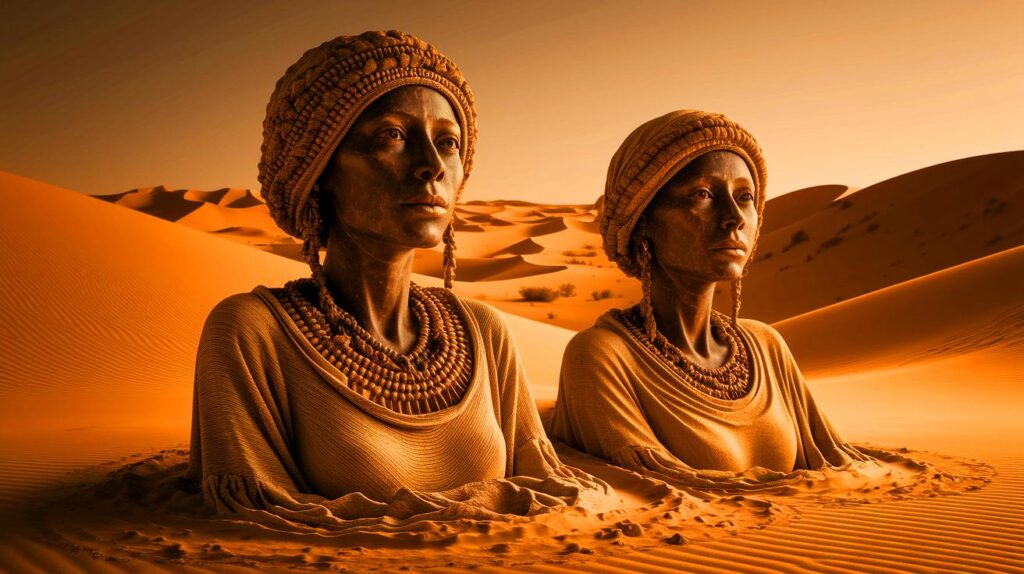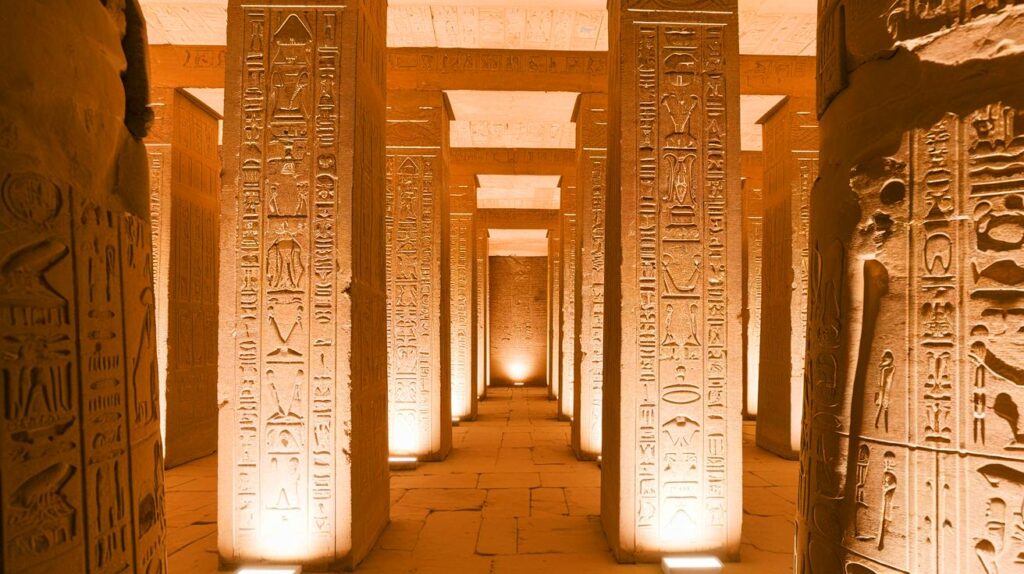| In Brief |
|
The discovery of DNA from two mummified women in Libya has opened a new window into the ancient history of the Sahara, once a verdant and inhabited space. These genetic finds challenge previous theories by providing surprising revelations about the origins of populations that lived in what is now an arid desert. By analyzing these ancient genomes, researchers have traced the complex history of this region and shed new light on human migrations across the Sahara.
The Mystery of the Green Sahara
Before becoming the largest desert in the world, the Sahara was a lush environment, known as the “Green Sahara.” This period, referred to as “African Humidity,” lasted approximately 9,000 years, providing a habitat rich in biodiversity. Experts have long pondered the human communities that thrived in this region. The analysis of genomes taken from two female Libyan mummies offers valuable clues. These findings not only help us understand the climatic evolution of the area but also decipher the lifestyle of its inhabitants. The transition from a verdant area to a harsh desert profoundly affected human populations, shaping the genetic history of its inhabitants.
Dismissing the Sub-Saharan Hypothesis
The discovery made in the Tadrart Acacus mountains, in southwestern Libya, has surprised the scientific community. The DNA extracted from the mummies, compared to hundreds of modern and ancient genomes, has dismissed the hypothesis of a sub-Saharan ancestry. This theory, previously the most accepted, has been challenged by results indicating genetic links with Moroccan hunter-gatherers. This highlights the importance of the region as a crossroads for human migrations, where unexpected genetic intermingling has shaped local populations. These discoveries prompt a reevaluation of the interactions between ancient Sahara populations and their neighbors.
Genetic Isolation and Migration Flows
Research findings show that these North African populations had a low quantity of Neanderthal DNA, though higher than that of current sub-Saharan Africans. This unique characteristic suggests prolonged isolation for these communities, but also limited genetic exchanges with populations outside of Africa. Johannes Krause, from the Max Planck Institute, emphasizes that these findings prove the existence of complex genetic flows that enriched the genetic heritage of the region’s early inhabitants. Future studies may reveal previously unsuspected human migrations driven by climatic and environmental changes.
Toward New Research Perspectives
Recent advancements in genomics are opening unprecedented perspectives for understanding ancient human migrations. Through the study of DNA, scientists hope to trace the movements of populations and their interactions across the Sahara. This region, though hostile today, was once a crucial passageway for our ancestors, shaping human evolution. The continuation of this research could uncover secrets buried for millennia, offering a fascinating glimpse into the history of humanity. What will be the next chapter in this quest to discover our distant origins?








